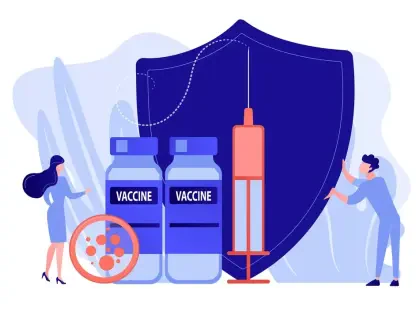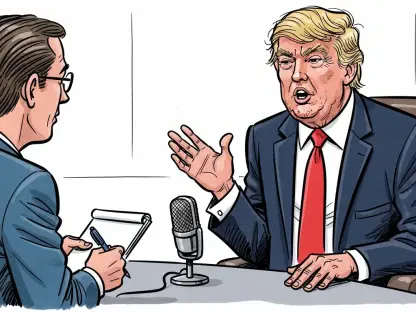The Trump administration’s proposal for significant budget cuts to public broadcasting has stirred a heated national debate. At its core, this proposal suggests slashing over $1 billion from the Corporation for Public Broadcasting (CPB), impacting both National Public Radio (NPR) and the Public Broadcasting Service (PBS). The plan is part of a broader initiative for fiscal reduction led by the Department of Government Efficiency (DOGE). The drive for economizing governmental spending, however, is met with strong resistance from those who contend that public broadcasting plays an invaluable role in societal communication and community well-being, especially in rural settings. The decision carries implications beyond fiscal matters, touching on the essence of public service, media plurality, and the broader welfare of diverse American communities that rely heavily on these services.
A key point of contention lies in the effect of these cuts on rural communities. Public broadcasting remains a primary source of information for these communities, offering not just entertainment but crucial news and emergency updates. Proponents argue that the CPB’s current funding—less than 0.01 percent of the federal budget—is an economical but pivotal investment that supports critical media infrastructure across all congressional districts. Opponents of the cuts insist that fiscal responsibility should not come at the expense of these essential services. They highlight how public broadcasting’s reach and quality of programming are often unmatched by commercial competitors, serving as a bedrock for trustworthy and accessible information in underserved areas.
Bipartisan Support Highlights Broadcasting Importance
The proposal to scale back funding has not only divided political circles but also ignited a rare display of bipartisan cooperation. The Public Broadcasting Caucus, with co-chairs such as Rep. Mark Amodei and Rep. Dan Goldman, vehemently defends public media funding. They argue that cuts would devastate local stations, leaving many communities without free, high-quality programming. For many rural areas, public media stations are among the few sources of reliable information, and without this funding, they face significant operational challenges. Amodei and Goldman emphasize that, although the funds constitute a small portion of the federal budget, the breadth of services they enable is vast and would be sorely missed if curtailed.
This bipartisan defense underscores public broadcasting’s perceived non-partisan utility and the significance of preserving this resource for rural America. People like Rep. Mike Simpson and Sen. Mike Rounds add that unlike urban areas, rural regions often lack commercial alternatives that provide reliable emergency and educational programming. Moreover, local public media often remains devoid of partisan bias, focusing instead on civic and informational content that sustains community engagement and public safety. This broader acceptance across political lines reflects a shared understanding of public media’s indispensable role beyond entertainment.
Economic Implications of Funding Reductions
Economic ramifications loom if public broadcasting support decreases, extending beyond mere operational concerns. Mark Amodei and Dan Goldman articulate that over 500 radio and TV stations could face job losses, exacerbating economic distress in rural areas. Nearly half of these stations are in rural locations where raising private funds is especially challenging. These economic consequences spotlight the potential domino effect: as public media stations possibly close or reduce service, local economies may suffer due to reduced employment and decreased information flow, which is pivotal for both economic activity and public welfare.
The CPB has steadfastly asserted that federal funding remains irreplaceable, acting as the financial backbone for educational content and vital communications. As federal support acts as a lifeline, its withdrawal threatens to erode the fabric of community-focused, advertisement-free broadcasting. This situation invites reflection on the broader necessity of preserving valuable educational and emergency services for populations with limited media options. Critics of the funding reduction warn of the uncalculated risks of losing such an integral part of America’s informational ecosystem.
Broader Context and Potential Solutions
The conversation around funding reductions brings into focus the broader debate on governmental roles and civic engagement. Some conservatives suggest wealthy patrons could fill the gap left by diminished federal support, enhancing funding for public broadcasting ventures. However, this notion does not account for the sustained dependence of rural and underserved communities on this federally-backed media. Furthermore, it overlooks the systemic challenges of diverting private funds to replace government support, particularly in regions less attractive to private investors yet deeply reliant on public services for information.
The ongoing discourse illustrates the challenging balance between fulfilling fiscal duties and safeguarding public service essentials like public media. As stakeholders explore sustainable solutions, the emphasis should be on innovation within funding strategies, seeking synergies between federal aid, private investment, and community involvement to fortify public media networks. Efforts should focus on maintaining the integrity of rural broadcasting systems, ensuring they remain vibrant sources of community connection and information.
A Nuanced Battle for Public Welfare
The Trump administration’s proposal to significantly cut funding for public broadcasting has sparked intense national debate. Central to this plan is the suggestion to slash over $1 billion from the Corporation for Public Broadcasting (CPB), which funds both National Public Radio (NPR) and the Public Broadcasting Service (PBS). This proposal is part of a broader fiscal reduction initiative driven by the Department of Government Efficiency (DOGE). While the aim is to reduce government spending, the proposal faces strong opposition. Critics argue that public broadcasting plays an essential role in societal communication and community well-being, especially in rural areas. The impact of these proposed cuts extends beyond financial issues, as it touches on the fundamental values of public service and media diversity. Public broadcasting serves as a critical source of information, providing not just entertainment but also vital news and emergency broadcasts. Supporters emphasize that CPB funding, though less than 0.01% of the federal budget, is a significant investment supporting crucial media infrastructure across the nation.









